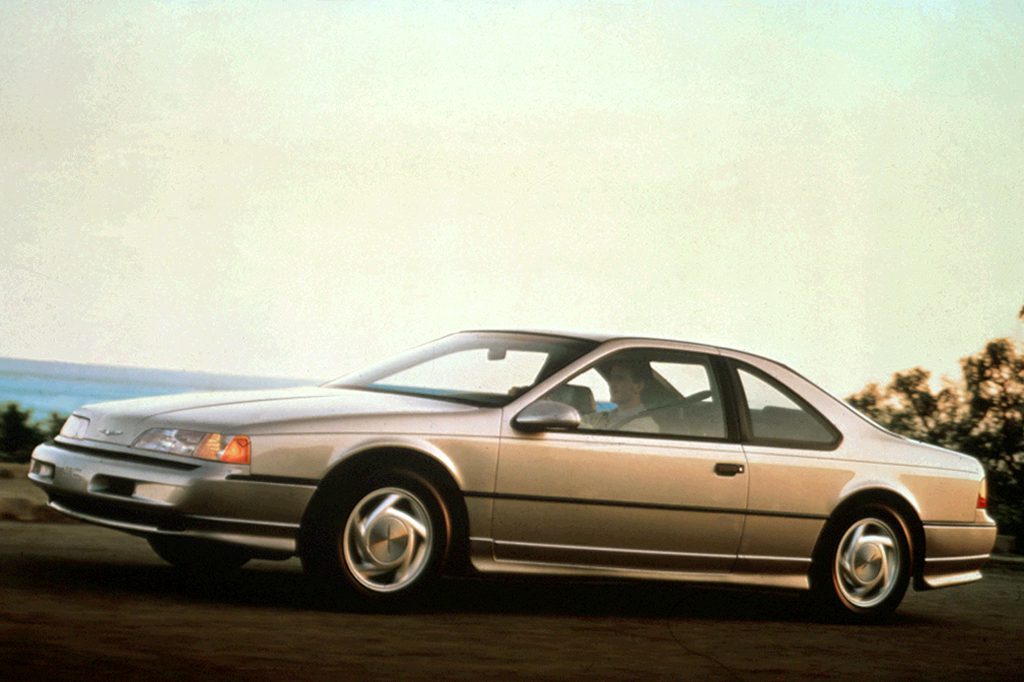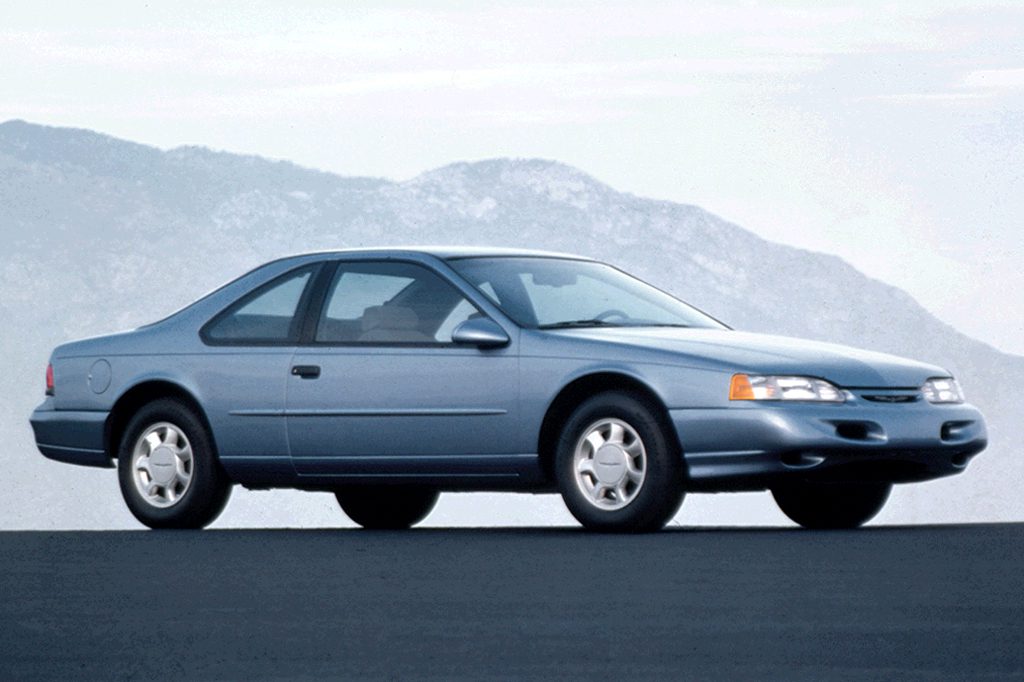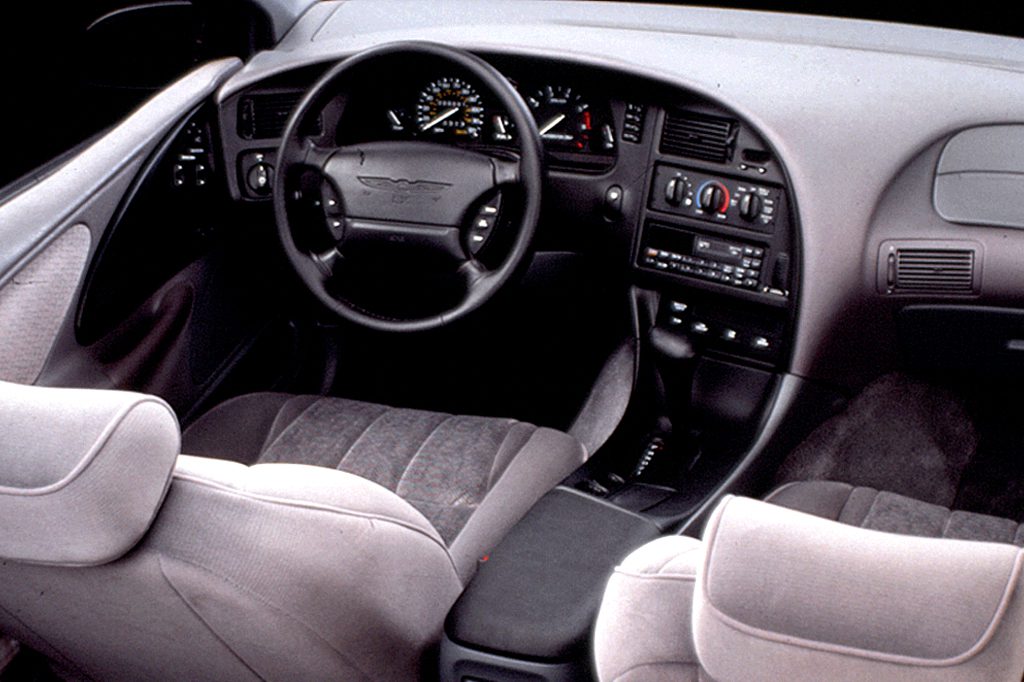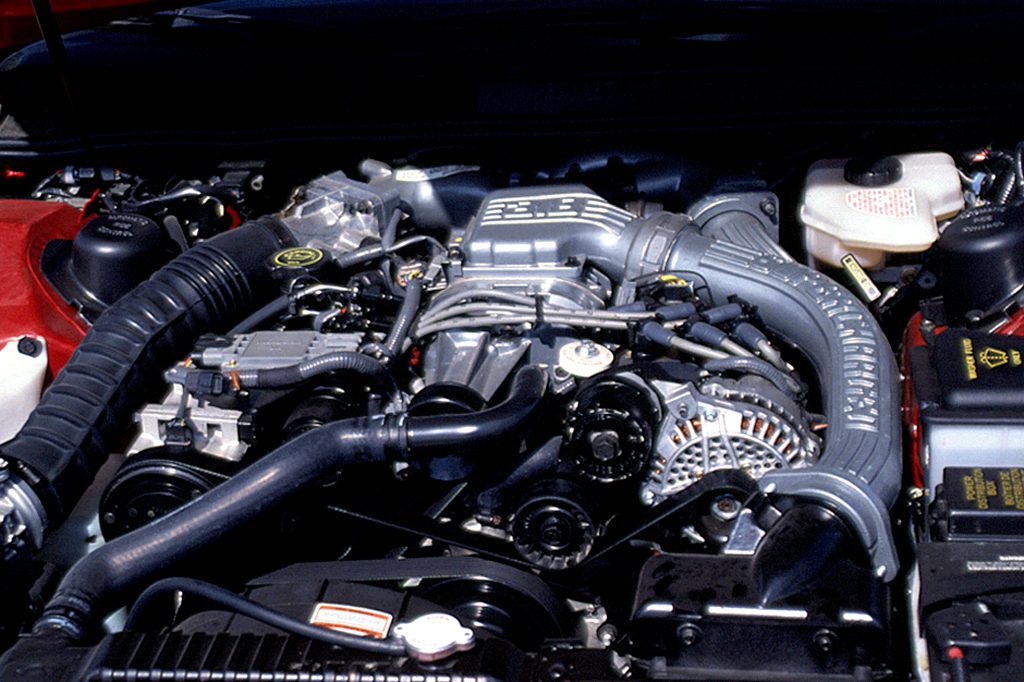| Premium sporty/performance car; Built in USA |
|
|
| Good condition price range: $1,000 – $2,300* |

1990 Ford Thunderbird

1990 Ford Thunderbird

1994 Ford Thunderbird LX

1994 Ford Thunderbird interior

1990 Ford Thunderbird SC V-6 engine
| Pros: |
|
| Cons: |
|
Standard Thunderbirds are pretty and pleasant compared to front-drive GM coupes, such as the Chevrolet Monte Carlo and Pontiac Grand Prix. You get a solid feel, quiet ride, and modern appearance.
Overview
Thunderbird was restyled in 1989 and became trimmer in its overall dimensions but rides on a wheelbase nine inches longer than before. Also new at that time was a fully independent suspension. Mercury’s Cougar is similar, but with different appearance touches. Base and LX editions had a 3.8-liter V6 and 4-speed overdrive automatic. Performance fans had a particularly tempting choice: a supercharged, intercooled variant of the V6 that churned out 210 horsepower in the Super Coupe (SC), which featured dual exhausts, 16-inch tires, and 4-wheel antilock disc brakes. Four-wheel disc brakes came standard on the SC, but were optional on the LX.
Yearly Updates
| 1991 Thunderbird For 1991, a V8 option was back: a 5.0-liter engine rated at 200 horsepower. |
| 1992 Thunderbird Sport models had a standard V8, making four models in all: base, Sport, LX, and SC. LX/Sport front ends got the SC’s faired air intakes and aero skirting. All models wore new full-width taillights. |
| 1993 Thunderbird Base and Sport models were gone, leaving only the LX and Super Coupe. Thunderbirds still had no airbag at all. |
| 1994 Thunderbird An overhead-cam 4.6-liter V8 arrived for ’94, along with driver- and passenger-side airbags and optional traction control. T-Birds featured new front/rear fascias, a new hood, and headlights. Motorized seatbelts were gone. |
| 1995 Thunderbird Variable-assist power steering no longer was standard on the LX, except with V8 power. |
| 1996 Thunderbird No more Super Coupes went to dealerships, but Thunderbird continued in LX guise. Extensive styling changes included new fascias, clear-lens headlights, and a new grille with larger opening. Color-keyed body moldings were integrated with door panels. |
| 1997 Thunderbird Revisions to the dash and interior layout were the major change for ’97. The simplified instrument cluster featured new gauges with orange needles, while warning lights replaced the oil pressure gauge and ammeter. The center console was redesigned to provide dual cupholders, a coin holder, and larger storage bin. Ford also made four-wheel disc brakes standard. At the end of the model year, Ford announced the end of Thunderbird production. |
